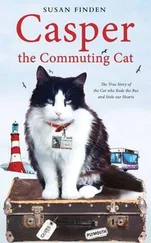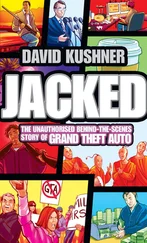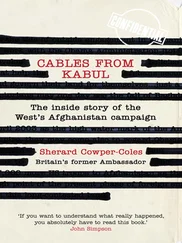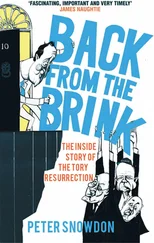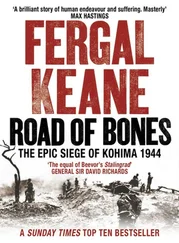After dropping out of the University of Illinois at Urbana-Champaign and then the University of Chicago, where he learned to write computer software, Ellison drove a beat-up car to California. Although he had little trouble getting hired, staying so was a different story. He stumbled through a raft of computer-related jobs until he heard about a new kind of software that could store and quickly manipulate large databases. Seeing its potential, he launched a business in 1977 that would become Oracle. The company doesn’t produce the kind of software that consumers buy or even know much about, but every organization that stores significant amounts of data needs it. For most of its first decade, sales doubled every year, so quickly that Oracle appeared to be on the verge of going totally out of control. Ellison’s personal life was equally rocky. He married and divorced three times, and he broke his neck in a surfing accident.
In 1990, Ellison was almost booted out of his own company after Oracle disclosed that some of its employees had booked millions of dollars of sales that hadn’t actually materialized. But by the mid-1990s it seemed that Ellison’s high-stakes, step-skipping management style was entirely appropriate for an industry that was changing faster than any traditional organization could. Ellison was confident that no company was better suited than his to capitalize on the burgeoning Internet. After all, the first generation of e-commerce blue bloods—Amazon.com, eBay, and Yahoo!—all relied on Oracle software. Thanks to them, and their gravity-defying stock prices, Ellison believed that the value of Oracle’s shares would also explode. And he thought that would enable him to achieve his ultimate ambition—to replace Bill Gates as the world’s richest man.
Ellison had always been interested in sailing. As a child, he imagined being able to travel to exotic places on the yachts he saw on Lake Michigan. Soon after he moved to California, he bought a thirty-four-foot sloop, although he gave it up because he couldn’t afford it. In 1994, Ellison’s next-door neighbor, a transplanted New Zealander named David Thomson, suggested the idea of building a maxi-yacht. The largest kind of boat permitted in many races, maxis are about eighty feet long. Ellison said yes, but he imposed a couple of conditions. First, he wanted it to be the fastest boat of its kind. Second, he wanted Thomson to do all the work. Thomson was a private investor affluent enough to live in Ellison’s neighborhood, but he wasn’t in a position to spend 3 or 4 million dollars for his own maxi. Deciding that it would be fun to oversee the design and construction of Ellison’s boat, Thomson readily agreed to his terms.
Typically, when someone decides to build a boat, he or she wants to be involved in the plans, but Ellison made it clear that he didn’t want to know about the details. When Thomson walked over to Ellison’s house with a set of engineering drawings, they spent only a few minutes talking about the boat before Ellison turned the conversation to his newest plane, which they discussed for more than an hour. Thomson did send Ellison occasional e-mail updates. At the end of one, Thomson, who had heard that Ellison was going to the White House for a state dinner honoring the emperor of Japan, asked about the protocol for such an occasion. “What will you wear? Do Americans bow to the emperor?” At the end of the e-mail, Thomson wrote, “Have a great time. Sayonara.”
Seconds after he pushed the SEND button, he sent another e-mail: “Sayonara. That’s not a bad name for a boat.”
Ellison didn’t answer Thomson’s White House etiquette questions, but to the name suggestion, he punched out an instant reply: “That’s it.”
Sayonara was completed in Auckland in May 1995, just a few days after Team New Zealand won the America’s Cup—a victory that the tiny nation commemorated with four ticker-tape parades and an outpouring of nationalistic pride rivaling the celebrations that followed World War II. Thomson had recruited almost half of Sayonara ’s crew from the winning squad, and they flew to San Francisco for Sayonara ’s inaugural sail shortly after the last parade. Thomson hired Paul Cayard to be the boat’s first professional skipper. Cayard, who was the lead helmsman for Dennis Conner on Stars & Stripes , the boat that lost the Cup to the Kiwis, had competed in a total of five America’s Cup regattas and in 1998 won the around-the-world Whitbread Race. To round out the crew, Cayard recruited several other members from Stars & Stripes to sail on Sayonara , creating a dream team of American and Kiwi yachtsmen.
When they met on Sayonara ’s deck in Alameda, across the bay from downtown San Francisco, the newly assembled crewmen were impressed by what they saw. Everything on the boat was black or white except for the red that filled the o in Sayonara ’s name painted on the side of the hull. White hulls typically have a dull finish, but Sayonara ’s reflected the shimmering water like a mirror. The 100-foot mast, which bent slightly toward the stern and tapered near the top, was black, as were the sail covers, winches, and instruments. Like most modern racers, Sayonara had a wide stern and a broad cockpit, on which stood a pair of large side-by-side steering wheels. Sayonara was narrower than most other maxis and, at twenty-three tons, lighter than most of its peers. The unpainted interior was carbon-fiber black. While there is nothing pleasant about a windowless black cabin, paint has weight, and the lack of it only emphasized the commitment to speed.
The front third of Sayonara was an empty black hole except for long bags of sails. There was a similar-looking black cavern in the back of the boat. Only the center section was designed to be inhabited by sailors, and even there the accommodations were spartan. Pipes, wires, and mechanical devices protruded from the walls, and nothing was done to cover them. Just as David Thomson had promised, Sayonara was a pure racing machine.
Within three years, Sayonara had become virtually invincible, winning three straight maxi-class world championships as well as the Newport to Bermuda Race, America’s most prestigious offshore race. Ellison couldn’t have been more pleased. “I could have bought the New York Yankees, but I couldn’t be the team’s shortstop. With the boat, I actually get to play on the team.”
Getting to know the crew was part of the fun. Ellison discovered that many of them shared his interests in planes and fast cars, and he enjoyed being with men who were driven and competitive but wanted nothing from him beyond the chance to sail on Sayonara. Ellison was so pleased by his crew and so confident of their abilities that in 1997 he arrived at the maxi championship regatta, which was held in Sardinia, with Rolex watches for every crewman. They had been engraved SAYONARA. MAXI WORLD CHAMPIONS. SARDINIA 1997 long before the racing began.
During that regatta’s penultimate race, Hasso Plattner’s Morning Glory was winning until the halyard that held its mainsail broke and the sail collapsed. Seizing on the opportunity, Sayonara , which had been in second place, took over the lead. For the rest of the race, it “covered” Morning Glory: whenever Morning Glory tacked, Sayonara also turned so that it always stood between its opponent and the finish line, making it virtually impossible for Plattner to regain the lead, even after his crew rigged a new halyard. Covering is standard racing procedure, but it infuriated Plattner. Even worse, by winning that day’s race, Sayonara clinched the championship. Ellison didn’t have to sail on the last day to win the regatta, and he decided not to. Plattner considered Ellison’s behavior unsportsmanlike. “I have only the worst English words to provide for them,” Plattner said later.
Читать дальше



